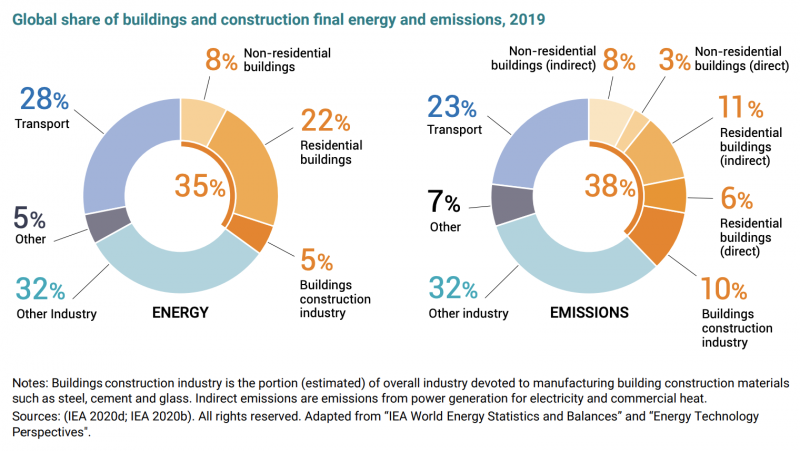
After receiving thousands of endorsements across dozens of countries, the United Nations has by official resolution declared 2022 to be the International Year of Glass (IYOG). The decision kicks off what will be a yearlong, worldwide effort to educate, innovate, and improve how glass is produced, used, and thought of at-large.
Meant to serve as a sort of stage to, as the UN website describes it, “draw attention to major issues and to encourage international action to address concerns which have global importance and ramifications,” designating International Years is a tradition dating back more than 60 years. The intergovernmental organization has turned a spotlight to a wide variety of issues of global impact, from obvious problems like refugees, human rights abuses, and literacy, to more specific topics like microcredit and crystallography. But so far as building materials go, glass is the first to be recognized. (Though, in full disclosure, the International Year of Forests (2011), International Year of Natural Fibres (2009), and International Year of Rice (2004) are definitely building material-related).
A Unique International Year
The significance of this particular International Year is not only that it highlights something tangible when often the focal point is conceptual—this year the UN is spotlighting “peace and trust,” for example—but that so many organizations from around the world are so heavily involved.
In the lead up to the UN's May 2021 decision to make 2022 the International Year of Glass, three major organizations operating in the glass industry—the International Commission on Glass, Community of Glass Associations, and International Committee for Museums and Collections of Glass—collected in a collaborative effort more than 1,300 endorsements across 78 countries. It’s the most support ever reported in a UN resolution naming an International Year.
Construction To Be Main Stage
Because glass is such a versatile material, the potential impacts of the IYOG are exceptionally widespread, likely to have an effect on virtually every industry. Still, construction is positioned such that the impacts may be especially pronounced.
Global production of flat glass, for instance—which is the glass most typically used in windows and doors—has increased by more than 20 million tons since 2016, which represents an effective doubling of the material’s overall market value from $48 billion to $90 billion. For context, homeowners in 2019 spent a total of only $51 billion on exterior replacement remodeling projects.
Improving sustainability and importance of “Green'' are prominent themes throughout the primary goals for the IYOG—laid out in a whitepaper available through the IYOG website (and shown below). And construction is an obvious target.
Primary Goals of the 2022 IYOG
- Stimulate discussion on Green Innovation to lower the carbon footprint of glass products,
- Develop a glass industry and products that do not impact negatively on the environment,
- Promote the design of affordable Green Buildings for different environments,
- Promote glass containers which follow the 3R rules for recycling,
- Promote education throughout the world as an essential tool to build sustainability,
- Ensure access for all to reliable communications and knowledge bases,
- Promote the opportunities glass offers to improve dental and medical health care for all,
- Extend the benefits of the Internet and 5G to developing nations, encouraging sustainable growth,
- Teach the next generation to understand the past and imagine the opportunities the future gives.
Buildings (none more than residential) account for both the majority of the world’s energy consumption (35%) and emissions (38%)—more than cars, busses, trains, and airplanes combined, regarding both stats, according to the UN’s 2020 Global Status Report for Buildings and Construction. Buildings also represent one of the most rife opportunities for gains in those areas.

A report from Glass for Europe, a trade association for the European Union’s glass industry, determined that through various types of solar control and Low-e window glazings that EU countries may reduce the overall energy consumption of buildings by as much as 30% over the next decade (assuming a “business as usual” window replacement rate of 2%). The IYOG references the findings on its website.
What’s Planned, What’s Coming
As far as confirmed events go, an opening conference to kick off the year is planned in Geneva; ICG has a congress scheduled in Berlin; there will be the Glass Expo in China (which will have satellite events); and there will be additional congresses held in Egypt, Europe, and the US that will focus on the art and history of glass.
Additional events are expected to happen throughout the year and globe. Also, a May 2021 press release from the ICG reveals further that planning has already begun on the “diffusion and coordination of thousands of activities across the planet” and goes on to explain that “congresses and seminars, industrial fairs and glass schools will coexist with artistic exhibitions, books, social media, scientific, technical and general interest magazines.”
For those hoping to get involved or stay informed, they can register their interest online.







